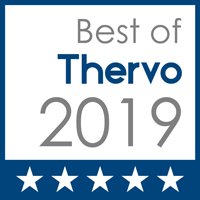United States citizens wanting to bring their foreign fiancé(e) to the country to marry must file Form I-129F, Petition For Alien Fiancé(e), to obtain a K-1 nonimmigrant visa for the fiancé(e). To obtain a K-1 visa, a couple must intend to marry within 90 days of the fiancé(e) entering the United States as a K-1 nonimmigrant, and a marriage must be valid, which means there is a bona fide intent by both parties to establish a life together and a marriage is not just to obtain an immigration benefit.
If a fiancé(e) marries a person within 90 days of admission to the country as a K-1 nonimmigrant, they can apply for lawful permanent resident (LPR, or a Green Card) status in the United States. When a person already married, plans to marry outside the United States, or their fiancé(e) already legally resides in the United States, the spouse or fiancé(e) will not be eligible for a K-1 visa.
K-1 Visa Eligibility United States Citizenship and Immigration Services (USCIS) states that people may be eligible to bring their fiancé(e)s to the United States on a K-1 visa if they meet the following requirements:
- They are a United States citizens;
- They and their fiancé(e) intend to marry within 90 days of the fiancé(e)’s admission to the United States on a K-1 nonimmigrant visa;
- They and their fiancé(e) are both legally free to marry (meaning both are legally able to marry in the United States and any previous marriages have been legally terminated by divorce, death, or annulment); and
- They and their fiancé(e) met each other in person at least once within the two-year period before they file their petition. People may request a waiver of this in-person meeting requirement if they can show that meeting in person would violate strict and long-established customs of a fiancé(e)’s foreign culture or social practice or result in extreme hardship to a person who is a United States citizen, petitioner.
K-1 Visa Process
The process for bringing a fiancé(e) to the United States involves USCIS, the United States Department of State (DOS), and the United States Customs and Border Protection (CBP). Each stage in the process could involve background and security checks conducted on both a person and their fiancé(e).
Checks can include various databases relating to national security, criminal history, and other information about a person and their fiancé(e). The checks are conducted using names, fingerprints, and other kinds of biographic or biometric information.
The process begins with the petition for the fiancé(e). You will file Form I-129F according to the instructions; USCIS reviews your form and the documents you submitted and may request additional evidence.
When a person establishes eligibility, USCIS approves their Form I-129F and recognizes the claimed fiancé(e) relationship or denies the Form I-129F and notifies the person of the reasons for the denial. The approved Form I-129F is sent to the DOS National Visa Center (NVC).
The next step is the visa application. The NVC will forward an approved Form I-129F to the United States Embassy or consulate where the fiancé(e) will apply for a K-1 nonimmigrant visa, generally the United States Embassy or consulate where the fiancé(e) lives.
The United States Embassy or consulate notifies people when the visa interview for their fiancé(e) is scheduled. A fiancé(e) will apply for a K-1 nonimmigrant visa and bring all required forms and documents to their visa interview.
The DOS consular officer determines whether a fiancé(e) qualifies for a K-1 nonimmigrant visa. If a consular officer grants a K-1 nonimmigrant visa, it will be valid for up to six months for a single entry.
If a consular officer does not find a relationship to be bona fide, DOS does not issue a K-1 nonimmigrant visa and instead returns Form I-129F to USCIS. If DOS returns a Form I-129F to USCIS after it has expired, it will allow it to remain expired.
The inspection at a port of entry will be the next step. If DOS issues a K-1 nonimmigrant visa, the fiancé(e) will travel to the United States and seek admission at a port of entry while their K-1 nonimmigrant visa is valid.
Just like any visa, K-1 nonimmigrant visas do not guarantee admission to the United States. CBP officers at ports of entry make the ultimate decisions about whether to admit fiancé(e)s.
Finally comes the marriage. When a fiancé(e) is admitted as a K-1 nonimmigrant, a person and their fiancé(e) have 90 days to marry.
The last step is the adjustment of status. When a person marries within 90 days, their fiancé(e) now spouse can file Form I-485, Application to Register Permanent Residence or Adjust Status to apply for a Green Card.
USCIS reviews Form I-485 and the documents the spouse submits. It may mail a request for evidence to the spouse if it needs additional documentation or information.
A person and their spouse are usually required to appear for an interview. If a person was married for less than two years at the time a Form I-485 is approved, USCIS will grant the spouse conditional permanent resident status and issue a Green Card that is valid for two years.
A spouse needs to remove the conditions on their residence and file Form I-751, Petition to Remove Conditions on Residence, 90 days before their Green Card expires. Every single case can be very different, so the length of the process always varies.
Call Us Today to Speak with a Los Angeles K-1 Lawyer
If you are trying to obtain a K-1 visa in Los Angeles; you do not have to handle everything alone. The Law Office of Todd Becraft understands how much people can struggle in trying to prove the validity of their relationship to federal agencies, but we can make sure you succeed.
Our firm has helped scores of people all over California get the K-1 visas they needed to marry. Call (213) 388-1821 or contact us online to set up a consultation with our Los Angeles K-1 lawyer.




